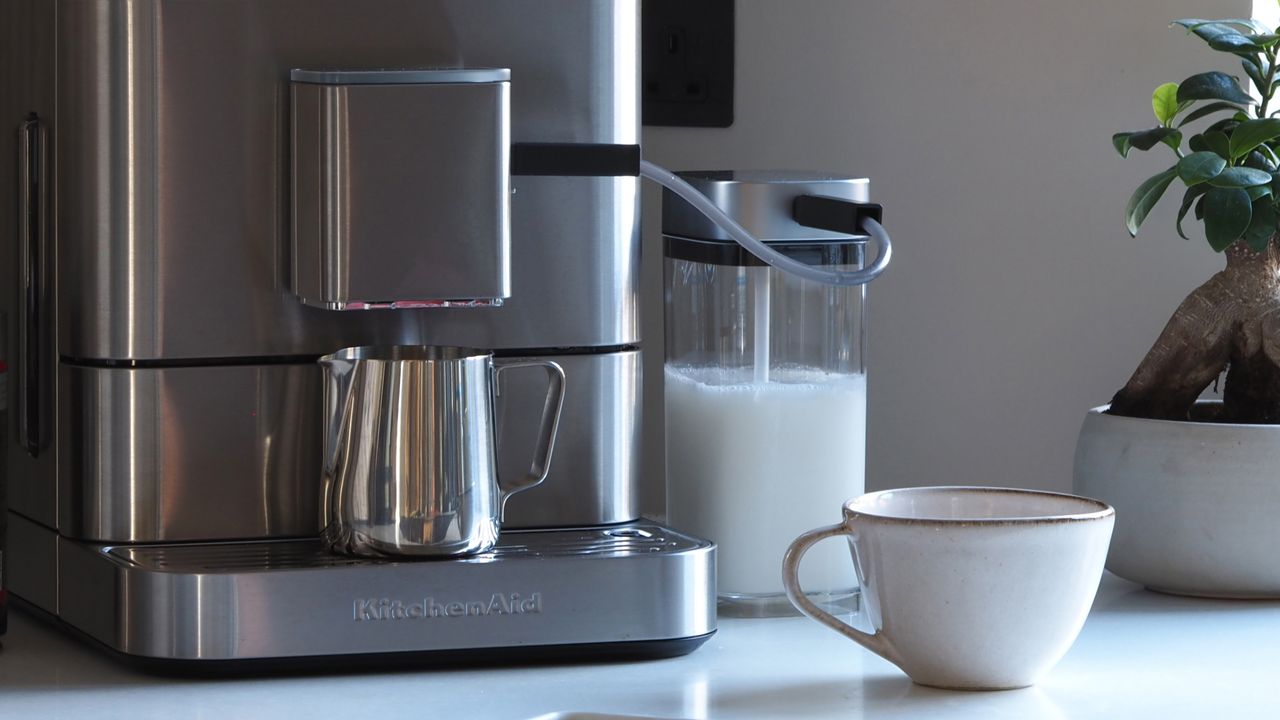
I've recently upped my coffee machine game with a new espresso maker, but can I make a confession? My caffeine tolerance is actually pretty low. You're actually more likely to find me with something a little less caffeinated than an espresso (think a matcha latte or hojicha, right now), but I don't totally get the point of decaf. I still want a little bit of a kick, just not the feeling of my heart beating out of my chest.
Well, it seems like I'm not the only one. There's a growing micro-trend in the coffee world for 'half caff', which, in its name, is pretty self-explanatory. It's about half the amount of caffeine of your usual coffee.
The coffee world is marketing half caff as a new option against decaf — in fact, Dualit just launched its own coffee pods with half caff coffee — but it got me to wondering, can I make my own espresso maker at home to create the same effect?
I pose the question, first, to the team at Kitchenaid, whose coffee machine I own. "From a technical point of view, the infusion, grind and pouring time can change the caffeine level but obviously it's tricky as it needs to be very minor tweaks to not affect the taste in itself," they tell me.
The infusion refers to how long the coffee grounds are in contact with the water — the longer the infusion, the more caffeine, but this changes the taste, too. A coarser grind, in general, releases less caffeine, but again you run the risk of a weak, sour taste if it's under extracted. Pouring time is more prevalent with pour over coffee makers, but it's worth mentioning in the same breath, because, like these other elements, they change the taste, probably for the negative, while reducing the caffeine output.
Can, I, then, just mix full caffeinated beans and decaf beans into the bean hopper of my machine for the same effect? I ask Livingetc's coffee expert and former barista Olivia Wolfe for some advice.
"I'd say that the biggest concern of trying half caff at home would be mixing flavor profiles of your coffee," she says. "If you are trying to mix them at home, decaf and regular coffee often have a pretty different flavor profile, so it's possibly not going to taste the best."
"I'd suggest starting by sourcing two that have similar flavors and acidity levels, rather than just mixing what you have at home," Olivia adds, "but brands are now selling specialty half caff blends, so maybe leave it to the professionals."
This premium whole bean roast from GIRLS WHO GRIND has tasting notes of dark chocolate, orange, and caramel.
Dualit launched a range of half caff coffee pods to go alongside its pod machine recently.
It's not just the preserve of specialty roasters — even M&S has got in on this emerging coffee trend.
This cool indie coffee brand has a half caff range I'd love to try, with a 50/50 split of standard and decaffeinated beans that blend well together.
Don't let the name fool you, these 'Half the Buzz' beans from BAD can also be bought readymade for espresso, stovetop, filter, French press, and more.
If your a pod drinker, these half caff ones from Amazon might be worth a try to cut your caffeine intake down.
So, message received — it's probably not a great idea to experiment at home with creating my own half caff. However, there are some tips you can take to make your coffee machine work better for you that do, actually, work.







